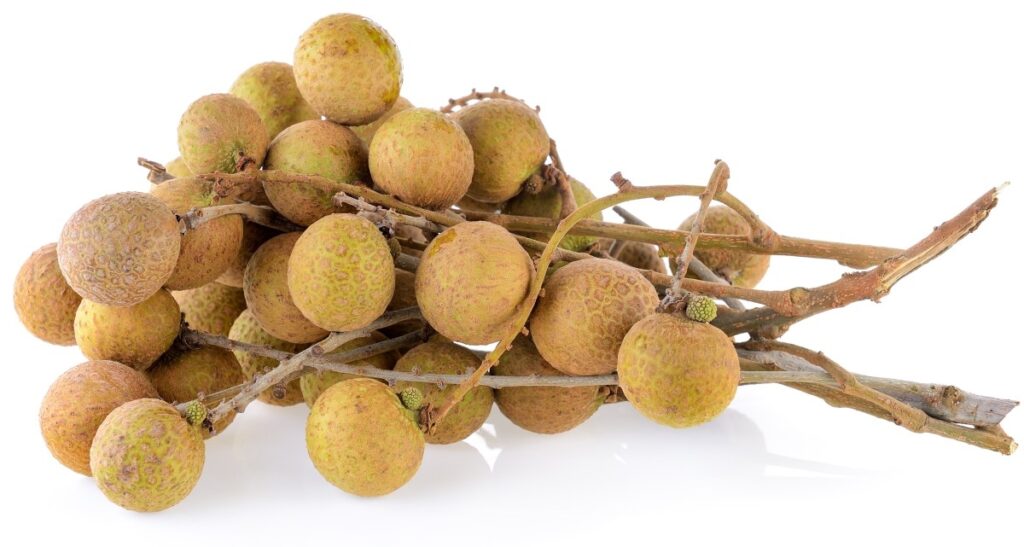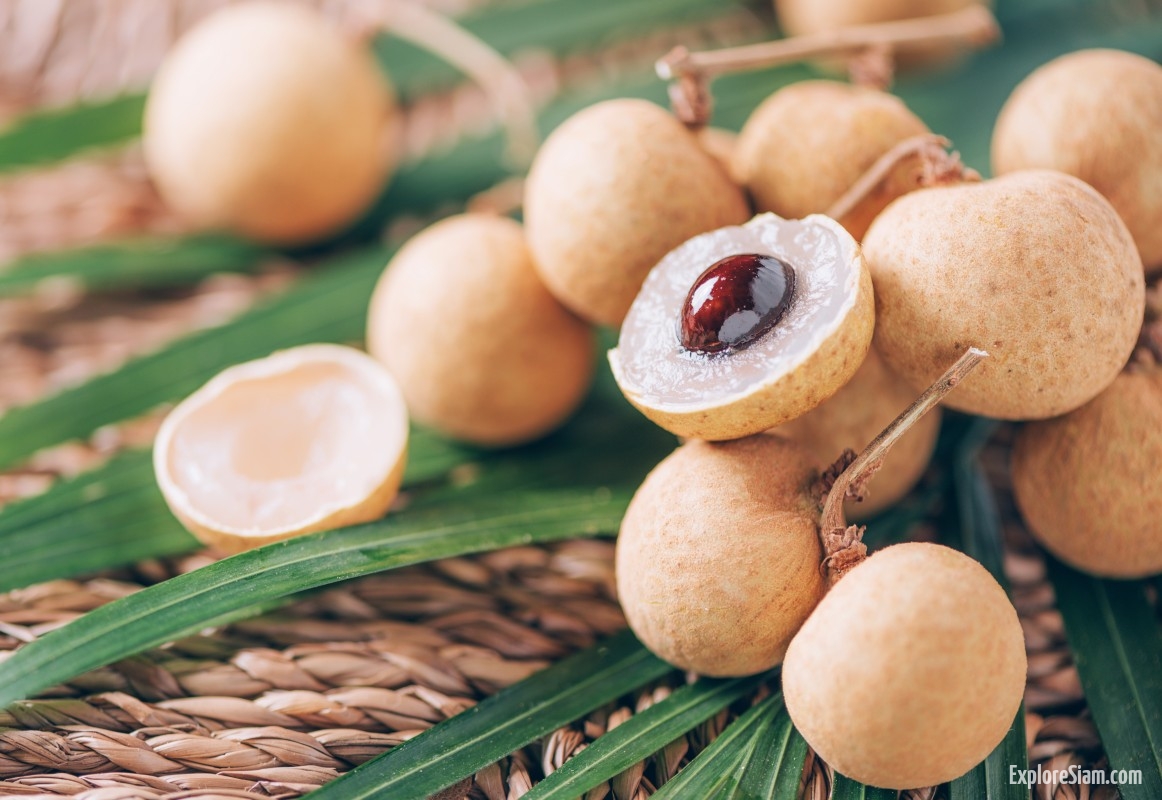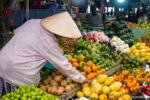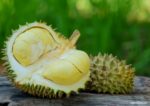Nestled in the tropical landscapes of Southeast Asia, the longan fruit often takes a backseat to its more famous cousins, the lychee and rambutan. However, for those who take the time to discover it, longan reveals itself as a true gem, bursting with sweet, juicy flavors and a unique charm. This little fruit, with its translucent flesh and dark, round seed, holds a special place in the hearts of the people in the region and offers a delightful experience for travelers willing to delve into its world.
The Longan Tree: A Marvel of Nature
The longan tree, scientifically known as Dimocarpus longan, thrives in the warm, humid climates of countries like Thailand, Vietnam, China, and the Philippines. These evergreen trees can grow up to 20 meters tall, their branches heavy with clusters of the small, brown fruit. The tree’s glossy, dark green leaves provide a beautiful contrast to the golden-brown hue of the ripe longans.
Cultivated for centuries, the longan tree is more than just a fruit-bearing plant. In traditional medicine, its leaves, bark, and seeds are used for various remedies, showcasing the tree’s versatility. The tree blossoms in spring, and by late summer, the fruits are ready to be harvested, marking a festive time in many rural communities. The sight of longan orchards in full bloom, with their fragrant flowers attracting bees and butterflies, is a sight to behold and a testament to nature’s bounty.
A Journey Through Taste and Texture
Longan, often referred to as “dragon’s eye” due to its appearance when peeled, offers a unique sensory experience. The thin, brittle shell is easily removed, revealing the translucent, juicy flesh inside. With a texture similar to that of a grape but slightly firmer, the longan’s taste is a perfect blend of sweetness and subtle musky undertones. The fruit’s flavor is complex, with hints of honey and floral notes, making it a favorite ingredient in both sweet and savory dishes.
In Southeast Asian cuisine, longan is enjoyed fresh, dried, or canned. Fresh longans are often eaten as a snack, their refreshing sweetness providing a perfect antidote to the tropical heat. Dried longans, on the other hand, are used in traditional desserts and herbal teas, where their concentrated flavor adds depth and richness. In some regions, the fruit is also incorporated into savory dishes, where it complements spicy and tangy flavors beautifully.
Longan syrup, made by boiling the fruit with sugar and water, is a popular way to preserve its flavor. This syrup can be drizzled over desserts, mixed into beverages, or used as a sweetener for various dishes. Additionally, longan wine, a specialty in some parts of China and Thailand, offers a unique twist on traditional fruit wines, with its delicate balance of sweetness and acidity.

Cultural Significance and Celebrations
Longan holds a special place in the cultural and culinary traditions of Southeast Asia. In Thailand, the annual Longan Fair in Lamphun Province celebrates the harvest with parades, beauty contests, and an array of longan-based products. This vibrant festival not only highlights the economic importance of the fruit but also showcases its cultural relevance. The fair attracts visitors from all over the country, who come to enjoy the festivities and sample the freshest longans of the season.
In Chinese culture, longan is often associated with good luck and prosperity. It is a common ingredient in festive dishes prepared during Lunar New Year celebrations, symbolizing family unity and happiness. The fruit’s use in traditional Chinese medicine is well-documented, where it is believed to have calming properties and to promote restful sleep. Longan is also used in traditional wedding ceremonies, where it is included in the bridal offerings as a symbol of sweetness and fertility.
Exploring Longan Orchards
For travelers seeking an authentic experience, visiting a longan orchard is a must. Many orchards in Thailand and Vietnam welcome visitors, offering guided tours that provide insights into the cultivation and harvesting processes. Walking through the lush orchards, with the sweet aroma of ripe longans filling the air, is a sensory delight. Visitors can also partake in fruit-picking activities, enjoying the freshest longans straight from the tree.
These visits often include tasting sessions, where visitors can sample a variety of longan products, from fresh fruit to dried snacks and even longan wine. This immersive experience allows travelers to connect with the local culture and appreciate the significance of this beloved fruit. The orchard owners, often eager to share their knowledge and passion, provide valuable insights into sustainable farming practices and the challenges of fruit cultivation.
Longan in Modern Cuisine
While longan has deep roots in traditional cuisine, it is also making its mark in contemporary culinary scenes. Innovative chefs are experimenting with the fruit, incorporating it into cocktails, salads, and desserts. Longan’s unique flavor profile lends itself to creative pairings, such as longan-infused sorbets, tangy longan sauces for grilled meats, and refreshing longan cocktails.
In cities like Bangkok and Ho Chi Minh City, upscale restaurants are showcasing longan in their menus, highlighting the fruit’s versatility and appeal. This modern twist on a traditional favorite is helping to introduce longan to a broader audience, ensuring that this sweet gem of Southeast Asia continues to shine. Mixologists are also using longan in craft cocktails, where its natural sweetness and delicate flavor complement a wide range of spirits and mixers.

The Health Benefits of Longan
Beyond its delightful taste, longan is also valued for its health benefits. Rich in vitamin C, iron, and antioxidants, the fruit is believed to boost the immune system, improve skin health, and aid in digestion. Traditional Chinese medicine often uses longan as a tonic to reduce anxiety, improve sleep, and enhance overall vitality. The fruit’s high water content also makes it an excellent hydrating snack, perfect for hot tropical climates.
Research has shown that longan contains bioactive compounds that may have anti-inflammatory and anti-cancer properties. These health benefits, combined with its delicious taste, make longan a popular choice for those seeking a nutritious and flavorful addition to their diet. Longan supplements and extracts are also available in health food stores, offering a convenient way to enjoy the fruit’s benefits year-round.
The Lasting Charm of Longan
Longan may not be as well-known as other tropical fruits, but its sweet, juicy flesh and cultural significance make it a true gem of Southeast Asia. From the lush orchards where it is cultivated to the bustling markets where it is sold, longan embodies the rich flavors and traditions of the region. Whether enjoyed fresh or as part of a culinary creation, this delightful fruit offers a taste of Southeast Asia’s vibrant and diverse food culture.
For travelers seeking to uncover the hidden treasures of this enchanting region, longan is a delicious and memorable discovery. Its journey from ancient orchards to modern kitchens is a testament to its enduring appeal and versatility. As more people around the world discover the unique taste and benefits of longan, this sweet gem of Southeast Asia will continue to shine brightly, captivating hearts and palates alike.





